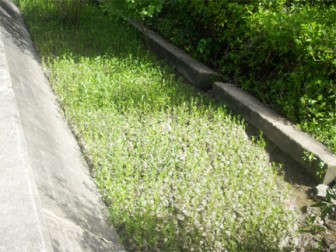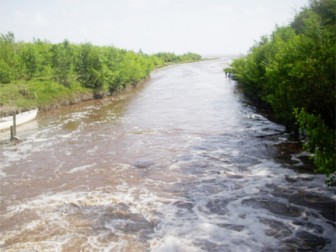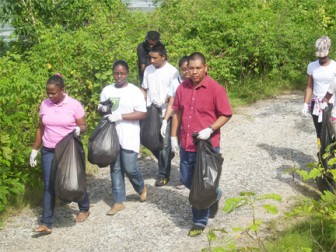The villages of Victoria and Cove and John on the East Coast of Demerara are poised to benefit from their involvement in the mangrove restoration project.
Since the European Union-funded project came on stream last year, the Man-grove Action Committee (MAC) has been carrying out groundwork at the community level, to better inform villagers living in proximity to specific project sites of the importance of mangroves to the mainland and the economic benefits they stand to gain.
In this regard, teams from the mangrove secretariat have been visiting areas along the coastland to carry out interactive sessions, including workshops with residents of the communities. Since February, the secretariat hosted students from various secondary schools on tours to the Victoria/Cove & John Mangrove Reserve, which the body hopes to develop into a prospective tourist site.


Recently, during a media tour of the area, organised by the secretariat with major inputs from residents of the two communities, environmentalist Jason Chacon noted that the response of villagers to the project has been phenomenal. Chacon, who works with the secretariat, added that the scenario is what was envisioned of community participation. He said that the site at Victoria/Cove & John is being prepared by residents for visits and recreational purposes, while noting that the area had significant potential in this regard.
Victoria resident Colin James, who functioned as the guide during the tour, told Stabroek News that the mangrove project has been beneficial to residents and the community as a whole. He said that it has been making the community “more identifiable.” James, who grew up at Victoria, noted that he has been centrally involved in the community mangrove committee.

He said that he has been involved in the production of honey prior to the project landing at Victoria and, according to him, he and other villagers have been able to better market their products, which is one of several indirect spinoffs of the project. He said too that he has been able to teach others in the community the importance of the tropical shrub, while adding that the community will benefit in the long run.
Persons have been employed from the community as rangers to monitor the reserve area, while residents have been preparing seedlings which are sold to the secretariat for the restoration aspect of the project.
The proposed mangrove reserve allows for easy access to the actual site via a paved road, perpendicular to the main East Coast Demerara Public Road, which serves as a direct link to the mangrove sea defence. The site can be accessed by motors vehicles, bikes and in the case of the wetland ecosystem, by boat. Plans are in train to have benches and benabs erected in the area as enhancement of the site comes on stream.
At the reserve, four of the seven mangrove species known to Guyana are present; the Avicennia germinans (Black mangrove, Rhizophora mangle (Red mangrove) and Laguncularia racemosa (White mangrove) and Conocarpus erectus (Buttonwood). According to the mangrove secretariat, the aforementioned is a rare occurrence and as a result the site can provide opportunities for education, awareness and scientific research.
To date, some 6,200 seedlings of the Black mangrove have been planted along the foreshore, since the secretariat has been concentrating on planting that particular species at replanting sites across the Coastland.
The reserve site possesses a combination of ecosystems, natural aesthetics and man-made infrastructure that speaks well for recreation and community-based ecotourism. To this end, students of secondary schools across the coastland have been afforded visits to the area to partake in environmental tours of the 2km long reserve.
During the recent tour, students of the Bishops’ High School in the city participated in a clean up campaign of the seawall area and its environs at Victoria and they expressed enthusiasm about their contributions towards the protection and maintenance of the environment.
Fourth form students of the school noted that they had been participating in an annual environmental global leadership programme, which allows groups from schools throughout the Caribbean to congregate and discuss issues pertaining to the environment. They noted that their participation in projects such as the mangrove restoration project was a good learning experience for them.
The group noted that it decided to participate in the clean up exercise since it would bring environmental benefits to the area, while some said that it would promote the communities there in the field of tourism.
Meanwhile, the mangrove secretariat has implemented programmes aimed at strengthening the monitoring of the growth of the shrub at its sites across the coastland. According to the secretariat, the plants have been adapting to the environment and the first report of this aspect of the project, which also covers the expenditure, has been submitted to the Ministry of Agriculture.




